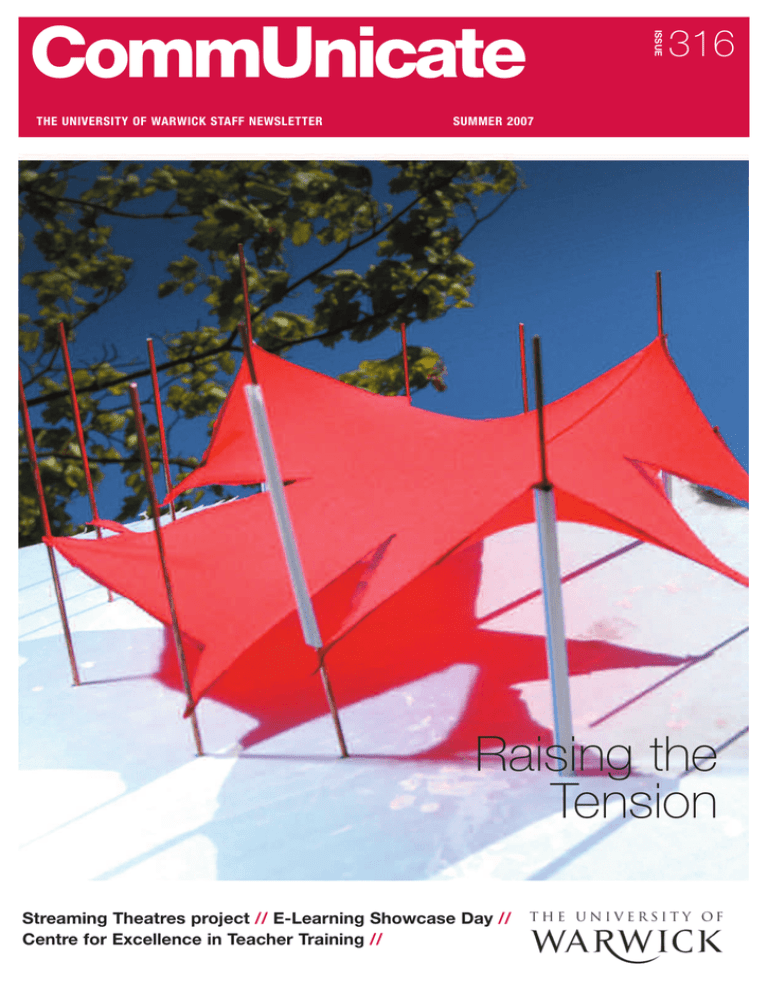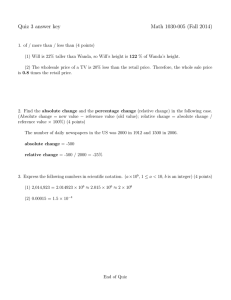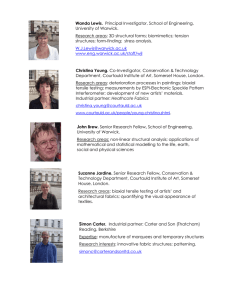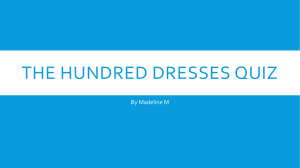CommUnicate Raising the Tension 316
advertisement

THE UNIVERSITY OF WARWICK STAFF NEWSLETTER ISSUE CommUnicate 316 SUMMER 2007 Raising the Tension Streaming Theatres project // E-Learning Showcase Day // Centre for Excellence in Teacher Training // Raising the Tension between Arts and Sciences WANDA LEWIS, READER IN THE SCHOOL OF ENGINEERING, HAS BEEN AWARDED A GRANT OF £402,000 FOR HER TWO-YEAR STRESS COMPUTATION AND MEASUREMENT RESEARCH PROJECT. HERE COMMUNICATE FINDS OUT MORE ABOUT THIS UNIQUELY FUNDED CROSS-DISCIPLINARY RESEARCH SPANNING BOTH FINE ARTS AND ENGINEERING. Wanda Lewis, Reader in the School of Engineering, has been awarded a grant of £402,000 for her two-year Stress Computation and Measurement research project. The funding is unique in that it comes from both the Engineering and Physical Sciences Research Council (EPSRC) and the Arts and Humanities Research Council (AHRC). Whilst cross- disciplinary research is encouraged by the research councils, finding ways to cross the disciplinary divide can be tricky but Wanda’s research spans both Fine Arts and Engineering. The project has also secured industrial collaboration with a tent structures manufacturer, and Warwick MBA graduate, Simon Carter of Carter and Sons. Simon will help with the supply of materials and will also advise on saleability and practicalities. Page 6 Wanda’s grant has been awarded under the ‘Designing for the 21st Century’ award scheme – a joint initiative between the AHRC and the EPSRC which aims to encourage applicants from across the remits of both funding bodies to work collaboratively and foster understanding of the different perspectives of design research. Wanda is working in partnership with Research Fellow John Brew at Warwick and with Dr Christina Young at Courtauld Institute of Art. Tension structures also feature heavily in Wanda’s teaching as well as her research. The fourth-year course, Advanced Structural Forms, an optional module for Civil Engineering and Engineering students, involves experimentation with small scale models (see images on opposite page) and is intended primarily as a conceptual design process. The work enables students to gain understanding of structural behaviour of 3D forms and trains them in conceptual design. Wanda’s research project covers stress computation, visualisation and measurement in three areas: the design of free form fabric structures, fine art restoration and artists’ materials and digital imagery and art. The common theme is the design of tensioned fabric as a medium for sculpturing architectural enclosures, and also as an artistic material. The specialism which Wanda’s team brings to the project is a new approach to computational stress analysis. This will be closely supported by state-of-the-art measurement and evaluation of fabrics, provided by Courtauld Institute of Art. The fabric structures strand of the project will focus largely on patterning – that is, the transformation of a stressed, 3dimensional form into a series of 2dimensional cutting patterns in unstrained fabric. The aim of patterning will be to ensure wrinkle-free, durable and aesthetically pleasing solutions. The work will involve computational and mathematical modelling, testing of fabrics, optical measurements of stress and building of physical models and prototypes of fabric enclosures. This strand of the project will support developments in outdoor living spaces and their structural safety in adverse weather. The fine art restoration strand focuses on developing new fabrics for artistic canvases both for new work and the restoration of existing work. Many paintings on canvas over 80 years old have been reinforced with a woven fabric adhered to the reverse. This choice of fabric is often a compromise between physical and chemical long-term stability, moisture permeability, aesthetics and commercial availability. Christina Young is developing new fabrics using tensile testing and optical non-destructive testing to predict stresses in canvases caused by differing degrees of applied tension, points of attachment and the effects of temperature and humidity. Prototype fabric samples will then be designed, modelled, tested and field trialled to evaluate handling properties and aesthetics. Development of these materials will reduce the risk of damage to the artwork when it’s displayed and transported and will help to increase the painting’s longevity. Computational modelling of the materials will be carried out at Warwick. The final strand of the project – Digital Art/Imagery – will work as a by-product of research into stressed fabrics. The computational methodology and optical measurements are capable of producing colour images of stress/deformation patterns developing in a given material subjected to a variety of loading/ environmental regimes. The images will have two roles – 1) to assist art restorers and 2) to be enjoyed as art décor. X For more information on the Designing for the 21st Century Award, visit www.ahrc.ac.uk/apply/research/sfi/ahrcsi/desig ning_for_the_21st_century.asp For more information on tent manufacturers, Carter and Son, visit www.carterandsonltd.co.uk Main photo shows Dr Wanda Lewis with Simon Carter, Carter and Sons. Photos above and below show 4th year Engineering students with their project models. Industrial collaboration for the first two strands of the project comes from tent structures manufacturer Carter and Sons. Simon Carter, who is also a Warwick graduate, came to the University in 1999 to study for his MBA in the Business School and contacted Wanda after reading a feature on tension structures in Warwick the Magazine in 2004. Since then, Simon has collaborated with Wanda in both research and teaching. Dr Christina Young’s industrial partners are precision fabric engineers Heathcoat Fabrics. Page 7




